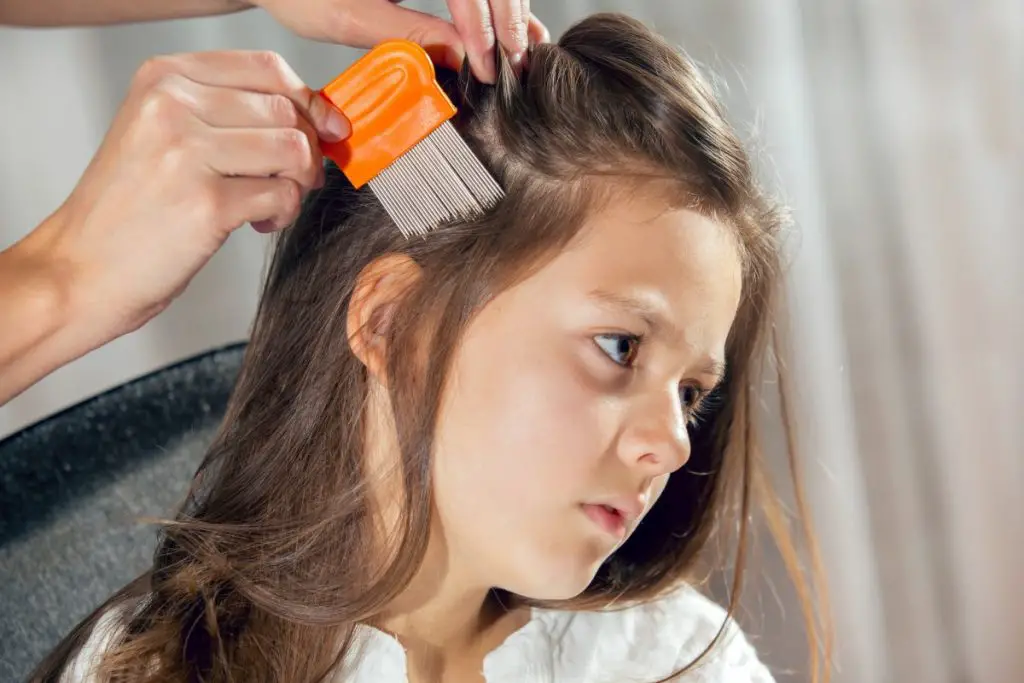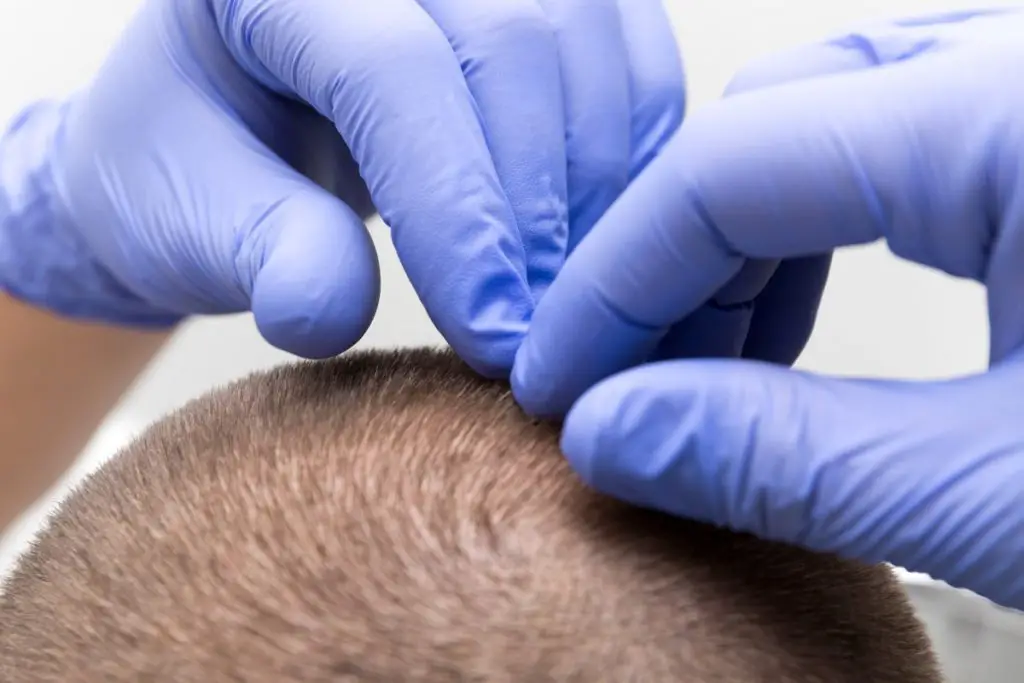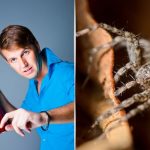
Head lice are one of the most ubiquitous experiences for children around the world. Despite their extremely regular appearance in schools and homes, there is a lot of misinformation about handling infestations when they happen.
Despite myths to the contrary, non-medicated hair products for wet or dry hair cannot kill lice or nits from hatching or sticking to hair. Traditional remedies that use household products can sometimes be useful for killing lice but are ineffective at dealing with nits without other treatments’ assistance.
Since head lice infestations are something that most children and parents of those children will have to deal with at some point in their lives, it is essential to understand how to handle these pests.
Head Lice Misconceptions
As mentioned above, myths abound about head lice. As with many other pests, sometimes these myths can cause far more harm than good.
In many cases, homemade treatments may not even entirely remove the head lice and can harm your child far more than lice ever could. The following is a list of common myths about head lice and their treatments that have been debunked by medical professionals.
Lice Spread By Jumping or Flying
Head lice are wingless insects, and they can’t jump or fly from head to head. However, they can crawl exceptionally quickly, and they hang onto hair tightly thanks to their hooklike claws.
Generally speaking, most transmissions of head lice infestations are due to direct head-to-head contact between two people.
While it is theoretically possible to pick up a louse from a public place, it is doubtful because lice live on human heads, and they need to feed every four to six hours.
As a result, sharing helmets, clothes, pillows, and hairbrushes rarely lead to lice transmission, though the risk is greater if these items are transferred from one child to another in rapid succession. It is still good to launder bedding and clothes if someone in your household has lice.

Pesticides Are The Only Solution
While pesticide-based treatments can often be useful for dealing with a head lice infestation, there is enormous variability in their effectiveness.
Many of these pests worldwide have developed resistance to over-the-counter lice treatments, most notably those containing permethrin and pyrethrins. While this resistance does not mean that a head lice product containing these chemicals will fail, it does reduce their chance at success.
Some pesticide products carry risky chemicals such as malathion, which is not only flammable but can cause stinging and burns as well. Experts advise against using products that contain the active ingredients malathion and lindane in particular.
While prescription pesticide treatments are generally more effective than their over-the-counter versions, they have many specific rules involving the child’s age and length of application. Read the directions carefully before using any of these treatments.
Lastly, there are many effective alternatives to pesticide-based treatments, which can be excellent methods for parents who prefer not to use chemical treatments or whose children are too young to use them.

Hairspray and Hair Gel
Hairspray and hair gel can neither prevent children from getting hair lice nor can they kill lice that have already infested a child’s head.
This misconception is born from the idea that since head lice grip the hairs on a child’s head, coating them with something slippery would make it more difficult for the lice to cling.
However, there are so many more effective treatments that this option is mostly a waste of time and money.
How To Treat Head Lice Properly
With some of the widespread misconceptions out of the way, it is essential to discuss the proper way to treat head lice. The following actions include both treatments for the child experiencing the infestation and treating the home to prevent re-infestation after the fact recommended by the CDC.
For treating head lice, you can use supplemental measures in combination with pharmacologic treatment. These additional measures are not required to eliminate the infestation but can be implemented to ensure 100% eradication.
- Treat the person suffering from head lice with over-the-counter or prescription medication. Before applying treatment, remove clothing that could become wet or stained by the treatment.
- Apply the lice medication according to the instructions provided with it. If the infested individual has longer than should-length hair, it may be necessary to use a second bottle of medication. At this time, refer to the medication’s instructions to determine how long it should be left on the hair and how soon it should be washed out.
- It should be noted that you should not use a conditioner before using lice medicine. Also, do not wash your hair for at least 24 hours after the lice medicine has been washed out.
- After treatment, have the infested individual put on clean clothing.
- If live lice are still found up to twelve hours after treatment, but they are moving more slowly than before, do not re-treat. Some medicine may take longer than others to kill all the lice.
- If, after twelve hours of treatment, no dead lice are found, and they are as active as before, the medicine may not be working. Before re-treating their hair, speak to your health care provider as a different medication may be required. Note that other medicines will require alternate treatment instructions, so refer to the new packaging.
- After each treatment, check the hair and comb with a nit or flea comb to remove nits every two to three days. Continue to check for two to three weeks to ensure that all lice and nits (eggs) have been removed. This practice significantly decreases the chance of self-reinfestation.
- Hats, scarves, pillowcases, bedding, clothing, and towels worn or used by the person dealing with lice within two days prior to treatment should be machine washed and dried using hot water and hot air cycles. Both lice and their eggs are killed by exposure to temperatures greater than 128.3°F (53.5°C) for five minutes.
- Dry-clean any items that can’t be laundered normally, and soak things like hairbrushes in hot water for ten minutes to clean them. Though the risk of getting head lice from a carpet or rug is low, vacuuming furniture and floors can also remove hairs dropped by an infested person that may still contain nits.
- Do not fumigate your home at any point during this process. Head lice cannot survive longer than one to two days if they cannot feed and are separated from a human host.
The Finish Line
Dealing with head lice is a nuisance, but it is vital to remember that these infestations have almost no potential to cause actual harm to their hosts.
Keep in mind that an infested child may be more emotionally distraught by the process than physically, and reassuring them that they are in no danger can be important to their well-being.
Eliminating head lice is a process that most parents will have to go through at some point in their life, and when it happens to you, ensure that you avoid the misinformation that surrounds this occurrence.
As discussed throughout this article, the process for treating head lice is one that is very accessible and only takes patience and understanding to accomplish.
Throughout the process, take the opportunity to explain the realities of the situation to your child and help them understand how head lice are spread.
If your child knows how it happened in the first place, they will be better equipped to prevent infestations from happening to them down the road. As with everything in life, knowledge is power, so ensure that you arm your children appropriately, and they will be well prepared for their own kids later on.



